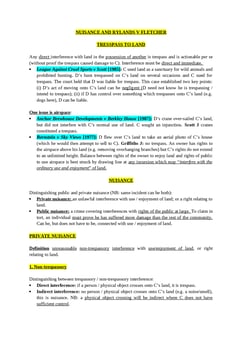Bolton v Stone [1951] AC 850
Judgement for the case Bolton v Stone
KEY POINTS
Mere remote possibilities of injury are insufficient; there must be a reasonable probability that a reasonable person would anticipate.
A defendant owes a duty of care to avoid causing harm to others if it is reasonably foreseeable that their actions could result in injury.
In negligence cases, the courts assess the level of risk associated with the defendant's actions. In this case, the court found that the risk of a cricket ball leaving the cricket ground and causing injury to someone on the highway was minimal, given the historical rarity of such incidents.
FACTS
Miss Stone, the plaintiff, was injured by a cricket ball while standing on the highway outside her house in Cheetham Hill. The ball was hit by a batsman playing in a match on the adjacent Cheetham Cricket Ground. She sued the committee and members of the Club for damages, although the person who hit the ball was not a defendant.
The cricket club had been in existence since about 1864, and Beckenham Road, where Miss Stone lived, was constructed in 1910. As part of the road's layout, a strip of ground was exchanged between the builder and the Club. The match pitches were located near the road, making it closer to the batsman.
The cricket field had a 7-foot-high fence, but due to the slope of the ground, the top of the fence was about 17 feet above the cricket pitch. The distance from the striker to the fence was approximately 78 yards, not the 90 yards stated by the judge, and to where Miss Stone was hit was just under 100 yards. A neighbor mentioned that balls occasionally hit his house, which was closer to the ground than Miss Stone's.
Club members testified that the hit was exceptionally rare, and it was very uncommon for a ball to go over the fence during a match. The court accepted their testimony.
JUDGEMENT
Appeal allowed.
COMMENTARY
The case highlights the importance of assessing the level of risk associated with the defendant's actions.
In this case, the court found the risk to be so minimal that it did not warrant a finding of negligence.
It exemplifies the court's cautious approach in imposing liability for rare and unforeseeable events, recognizing that not all accidents can result in a finding of negligence.
ORIGINAL ANALYSIS
Defendant was hit by a ball from Plaintiff’s cricket ground and sued for negligence.
HL said that although the injury was reasonably foreseeable, the risk of someone being injured was so small that negligence did not apply.
Lord Reid
The risk of harm, which has to be reasonably foreseeable, must also be a substantial one (though there are special categories that demand a higher standard).
The test is:
Whether the risk of damage to a person on the road was so small that a reasonable man in the position of the appellants, considering the matter from the point of view of safety, would have thought it right to refrain from taking steps to prevent the danger.
Lord Porter
It is not enough that there is a remote possibility that injury may occur: the question is, would a reasonable man anticipate it?
RELATED CASES
For Further Study on Bolton v Stone
Need instant answers? Our AI exam tutor is here to help.
Ask questions 🙋 Get answers 📔 It's simple 👁️👄👁️
Our AI is educated by the highest scoring students across all subjects and schools. Join hundreds of your peers today.
Get StartedRelated Product Samples
These product samples contain the same concepts we cover in this case.

